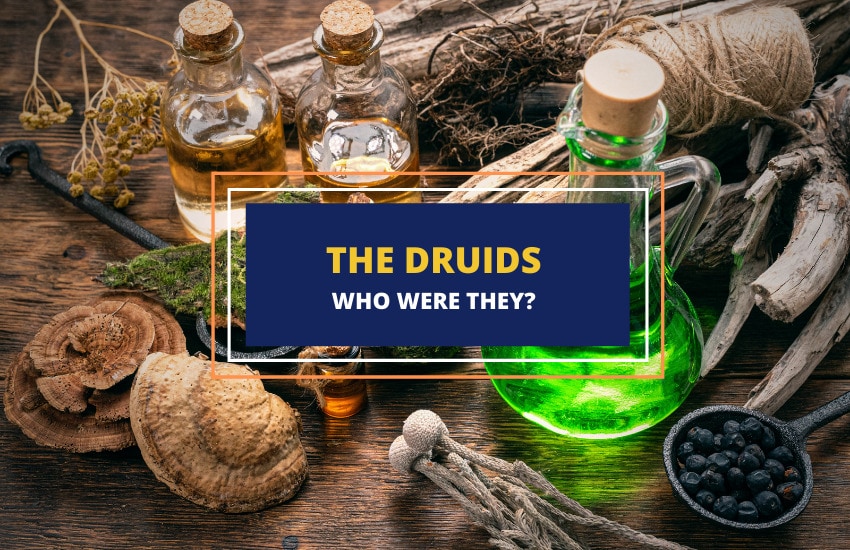
Table of Contents
The Druids were the wise shamans of pre-Christian Ireland. They were educated in the arts of the time which included astronomy, theology, and natural science. They were highly venerated by the people and worked as spiritual advisors to Ireland’s tribes.
Who Were the Irish Druids?
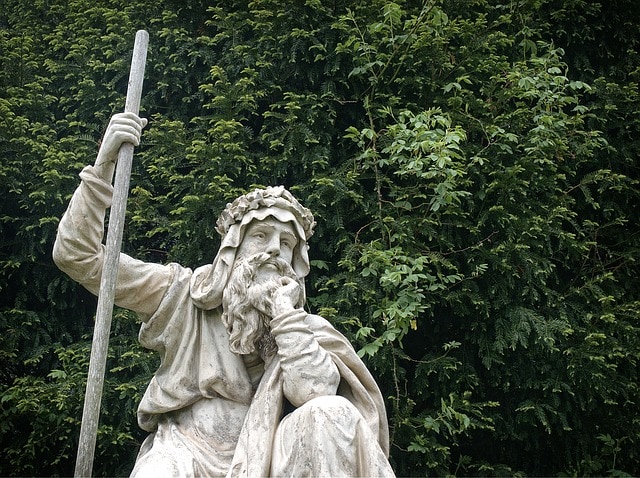
An arcane form of knowledge existed in ancient Ireland which included a deep understanding of natural philosophy, astronomy, prophecy, and even magic in the truest sense of the word – the manipulation of forces.
Evidence of this apparent mastery of nature can be seen in the great megalithic structures aligned with astrological alignment, stone petroglyphs representing numeral geometry and calendars, and the numerous stories that still exist. The powerful men and women who understood this wisdom were known as the Druids, or Drui in Old Irish.
The Druids of Ireland were the spiritual backbone of Celtic society, and although they shared a common heritage with Western Europe, they should never be confused with Celtic priests.
The Druids were not only spiritual intellectuals, but many were also fierce warriors. Famous Irish and Ulster leaders such as Cimbaeth of Emain Macha, Mog Roith of Munster, Crunn Ba Drui, and Fergus Fogha were both Druids and great warriors.
Above all, the Druids were people of learning, which is the true meaning behind the name. Their knowledge encompassed the laws of nature, medicine, music, poetry, and theology.
The Etymology of Drui
The Druids were known in Old Irish as Drui meaning “seer” or “wise being”, yet by the time of the Latin-Gaeilge language development, which occurred around the advent Christianity, the Gaelige (Gaelic) word Draoi was translated to the more negative term sorcerer.
Some scholars have suggested that Drui is related to the Irish word “Dair” meaning oak tree. It is possible that “Drui” could mean “wise men of the oak tree”, however, this would relate more to Gaulish Druids, who, according to Julius Caesar and other writers, venerated the oak tree as a deity. In Irish legend, however, the yew tree is often considered the most sacred. In Irish societies, many tribes had a sacred bile or tree, so it’s unlikely that the oak tree was the origin of the word Drui.
The original Irish word Drui is thus best interpreted as “wise” or “seer”, having more in common with the Magi of the East (Wise Men) than with Medieval magicians.
Origin of Druidism in Ireland
The origin of Druidism in Western Europe has been lost to time, however, there is ample evidence to suggest that Ireland was the original homeland of Druidic knowledge.
According to Julius Caesar’s testimony of Druidism in The Gallic Wars, if you wanted to acquire the knowledge taught by the Druids, you would have to go to Britain.
Ptolemy of Alexandria, who in the 2nd century wrote a manuscript called Geographia, gives a great deal of useful information on the geography of Western Europe around the 1st century A.D. In this work, Ptolemy calls Ireland the “sacred island” and lists both modern Ireland and Britain as Islands of the “Pretannaki”.
He identified the islands of Mona (Anglesey) and the Isle of Man through coordinates and stated that they were under the sovereignty of Irish tribes, opposed to Britons, adding to the idea that Ireland was the home of Druidism in Western Europe.
John Rhys has suggested that Druidic beliefs and knowledge were passed on to the early non-Celtic tribes of Britain and Ireland before later being adopted by the Celts.
What Powers Did the Druids Hold?

The Druids were revered in Irish legends as men and women of learning, often educated in many subjects. They had the respect of their tribal populations and are often said to have had more importance than the kings. Irish legends said that they had the final say on many matters concerning the tribal communities.
1- Power to choose the kings
The Druids were highly powerful in their societies, so much so that they chose the king through a shamanistic ritual, known as the Bull Dream.
At court, no one, including the king, could speak until the Druid had first spoken, and the Druids had the final say in any matter. Druids could take away the rights of those who opposed them and prohibit them from taking part in religious ceremonies and other community functions.
This would essentially make a person a pariah – an outcast of society. Naturally, no one wanted to get on the wrong side of a Druid.
2- Power to control nature
Ancient stories tell of Druids calling upon fog or storms to foil those who opposed them. They were said to be able to call on nature to aid them in times of need.
For example, a Druid by the name of Mathgen is said to have crushed his enemies with rocks from the mountains. Some apparently summoned snowstorms and darkness.
There are stories of early Christian missionaries taking on these powers from the Druids when attacked by their enemies.
3- Become invisible
Druids were said to be able to don a cloak that made them invisible in times of danger. Early Christianity adopted this idea, calling it a “mantle of protection”.
4- Use magic wands
Some writings speak of the Druids using branches hung with bells as wands to, for example, stop battles.
5- Shape-shift
There are stories of Druids assuming other forms. For instance, when the Druid Fer Fidail carried off a young woman, he changed his appearance to that of a female.
Druids were also said to turn people into animals such as in the story of Dalb, a lady Druid, changing three couples into pigs.
6- Induce supernatural sleep states
Some Druids are reputed to have been able to induce a form of hypnosis or a trance state, in order to get people to tell the truth.
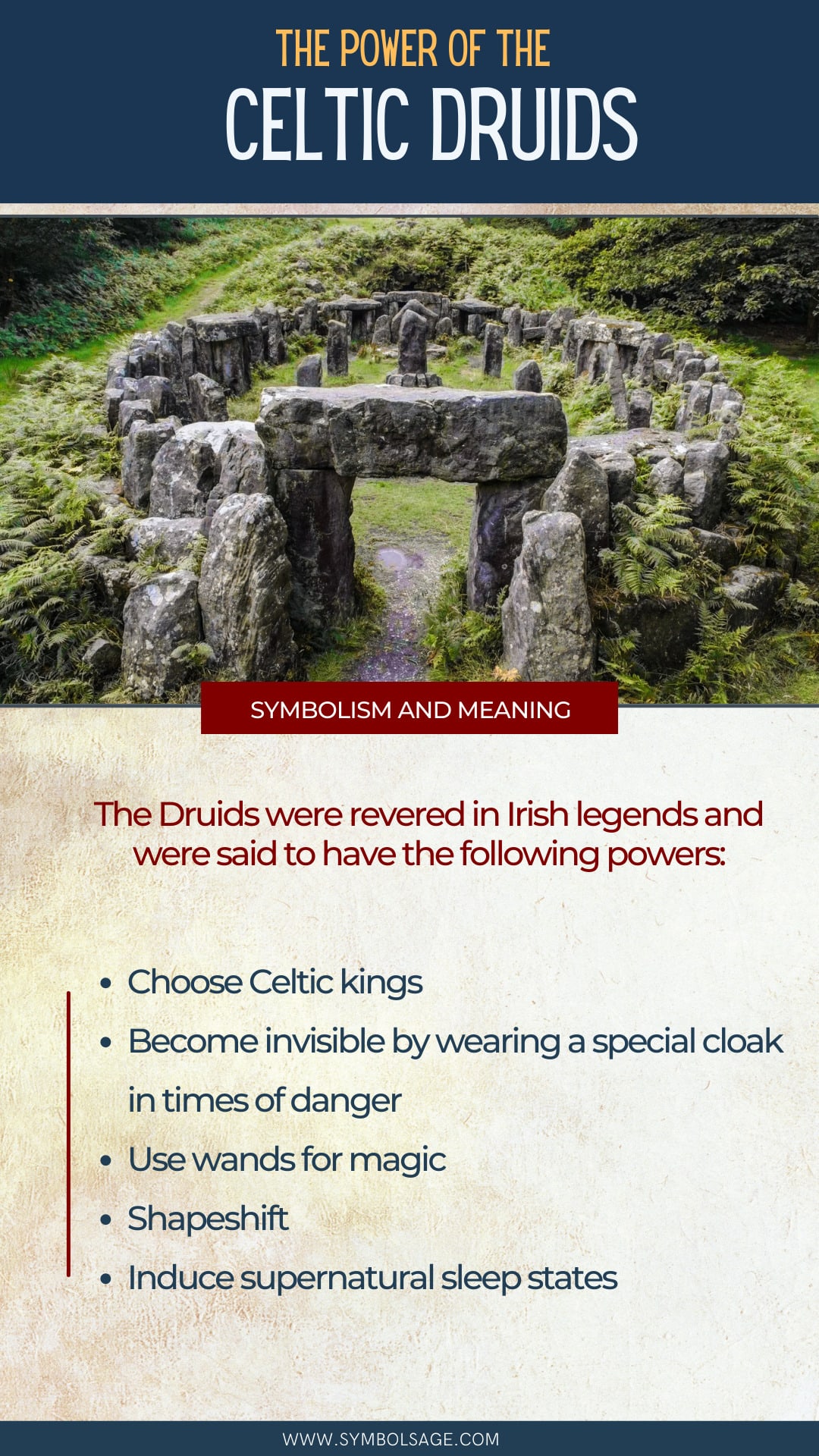
The Druids as Teachers
While some say that the Druids’ wisdom was kept secret and only imparted to a select few, others believe that Druids openly taught the public, and their lessons were available to all people of every caste.
They often taught in riddles or parables teaching principles like worship of the gods, abstaining from evil, and good behavior. They also gave lessons in secret to noblemen, meeting in caves or secluded glens. They never wrote their knowledge down so when they were killed in the Roman invasion, many of their teachings were lost.
The great Druid of Ulaidh, Cimbeath Mac Finntain, would deliver his teachings of Druidecht or Druidic science to crowds around the ancient capital of Emain Macha. His teachings were delivered to anyone interested. However, only eight people were said to have understood his teachings and thus were taken on as students. Another source states that he had around one hundred followers – an enormous number for a Druid.
All this reinforces the idea that on a spiritual and religious level, Druidism was not reserved for a specific class or group in society, but all could participate in the teachings. Those who were able to grasp the principles, or who were interested, would be taken on as students.
Druid Symbols in Ireland
Symbolism was highly important to tribes of the ancient world, and this is no different in Ireland. The following are among the most important symbols of the druids.
1- The Triskelion
The word triskelion comes from the Greek triskeles, which means “three legs”. It is a complex ancient symbol and was one of the most important symbols for the Druids. It was found on the megalithic chamber of Newgrange, alongside a shield in Ulster and a gold alloyed gong recovered from Emain Macha.
The triple spiral is thought to have been sacred in Druidic beliefs, representing the three-fold nature of universal laws and many of their other philosophical beliefs. The Druids believed in the transmigration of the soul which entailed three things – punishment, reward, and purification of the soul.
It is also thought to have represented motion because the arms are positioned in such a way as to imply motion outwards from the center. This movement symbolized energies and the movement of life’s cycles, and mankind’s progress.
Each of the three arms in the spiral was also significant. Some believe they symbolized life, death, and rebirth while others believe they represented spirit, mind, and physical body or past, present, and future. It is possible that to the Druids, the three arms of the triskelion stood for the three worlds – spiritual, earthly, and celestial.
2- The Equal-Armed Cross
While crosses are often associated with Christianity, the shape of the Celtic cross predated Christianity. The equal-armed shape is often referred to as “the square cross”. Its meanings have been lost in time as in this region in those times, most knowledge was transmitted orally.
The only written records were stone inscriptions in an alphabet known as Ogham. Early legends speak of yew tree branches being fashioned into T-shaped crosses inscribed with letters of the Ogham alphabet.
It is thought that the equal-armed cross functioned as a symbol of the universal powers of the sun and moon. Some believe that the four arms of the cross represent the four seasons of the year, or the four elements – water, earth, fire, and air.
The shape and meaning of the symbol slowly evolved and began to resemble the later Christian cross. Equal-armed cross shapes have been found on Medieval carvings all over Ireland, often encompassed by a circle which may have represented the Earth.
3- The Serpent
The serpent was another important symbol associated with Irish druids. Rough serpent-shaped carvings have been found in County Louth in Ireland, alongside many bronze age artifacts having geometric patterns which bore great similarities to spirals terminating in serpent-headed motifs.
Newgrange, where we find one of the oldest Triskelion petroglyphs, is often referred to as “the great serpent mound”, due to its curving shape. Interestingly, there hadn’t been any real snakes in Ireland since the Ice Age, so these depictions are clearly symbolic.
According to legend, Saint Patrick, a Christian in the 5th century, is credited with driving the “snakes” out of Ireland. These so-called snakes were probably the Druids. This idea makes sense because, in Christianity, the serpent is a symbol of the devil. After that time, the Druids were no longer the spiritual advisors of Ireland. In their place was Roman-Judeo Christianity.
The serpent was always a representation of a form of esoteric knowledge, known all across the world as a transmigration of consciousness from self-acquired wisdom. Roman-Judeo Christianity, on the other hand, was a teaching in which one could only obtain wisdom from the religious leaders.
The Irish Druids in Comparison to Druids from Gaul
There are certain obvious differences within the various legends between the Druids of Ireland and of Gaul.
Caesar and other Greek writers asserted that the Druids of Gaul were priests who did not engage in war, yet in Ireland, the majority of the great Druids are represented as both wise and warrior-like.
The Ogham alphabet is another important difference between the two sects. This script was used extensively in Ireland and Northern Scotland but not by the Druids in Gaul. It was made up of simple lines where every letter was said to represent a tree, and it formed the earliest form of writing in Ireland. Carvings in the Ogham alphabet have only been found in Western Europe, and archeologists are yet to find a single one in Gaul. The Gaulish Druids adopted the Greek alphabet and Caesar records their use of Greek characters in his Gallo Wars.
This again may revert to the claim that Ireland practiced a more arcane form of Druidism unaffected by the cultural influences of Greece, Phoenicia, and Eastern Europe that would have intermingled with the beliefs of Gaul.
The Fall of Druidism in Ireland
Most of those who still practiced spiritual beliefs of a pagan nature were slowly Christianized or Romanized by the third and fourth century A.D. Around this time, the name “Drui” seems to have lost importance, no longer designating a person who was sacred, well educated in the arts, and wise.
Instead, the word came to be associated with a person who was a degenerative, ungodly soothsayer or sorcerer, unworthy of respect or homage.
The Fili’s Involvement in the Downfall of Druidism
There were also prophets and lawmakers known as the “Fili” who were sometimes associated with the Druids in Irish legend. However, around the time of the introduction of Christianity to the region, they became the dominant grouping and the Druids began to recede into the background.
The Fili became what the legendary Druids had once symbolized in society. However, it is clear that they were a separate group as it is stated that Saint Patrick could not overcome the Druids without first converting the Fili.
From this point in the 4th century, the Fili became considered the religious backbone of society. They most likely remained popular because they aligned themselves with Christian teachings. Many of them became monks, and it seems that this was the turning point in the Romanization/ Christianization of Ireland.
The Warrior Druids
The Christianization of Ireland did not come easily as many tribes, especially in the province of Ulaidh, remained loyal to their Druids. They were opposed to the teaching and instructions of the early Roman Church and fought against its spread.
Fergus Fogha – The Last King of Emain Macha
Fergus Fogha was the last Ulster king to inhabit the ancient site of Emain Macha before being slain on the order of Muirdeach Tireach. An interesting section from the Irish Book of Ballymote states that Fergus killed Colla Uais with a spear thrust using sorcery, indicating that Fergus was a Druid. In the eyes of one Christian scholar, he manipulated the forces of nature to kill Colla Uais.
Cruinn ba Drui (“Cruinn who was a Druid”)
Cruinn Ba Drui is mentioned in Irish genealogies as “the last Drui”. He was King of Ulster and the Cruithne in the 4th century. The Cruithne were said to be the royal dynasty who inhabited Emhain Macha and were forced eastwards after many wars in the early Christian period
Cruinn ba Drui slew Muirdeach Tireach when he invaded Ulaidh. He had sent the Colla Dynasty against the Ulstermen. This avenged Fergus Foghas’ death. The Collas had recently taken a large portion of Ulaidh’s territory and renamed it “Airgialla”, which became one of the Roman-Judeo Christian centers of Ireland.
Cruinn Ba Drui’s grandson, Saran, king of Ulster in the 5th century, was said to have opposed the gospel teachings of St. Patrick fiercely, whereas their neighboring tribe, Dal Fiatach, became the first converts in Ulaidh.
The Battle for Ireland
In the seventh century, a great battle was fought in the modern town of Moira, Co. Down between the Ulaidh leader Congal Claen and his rivals the Gaelige and Christianized tribes of Domanall II of the Ui Neill dynasty. The battle is recorded in the poem Caith Mag Raith.
Congal Claen was the only king of Tara mentioned in a legitimate ancient Irish law manuscript. He seems to have been king but was forced to relinquish his throne due to a blemish on his reputation that legends say was instigated by Domnhall II.
Congal is said, on multiple occasions, to have made remarks about how Domnall was heavily influenced by his religious advisor, often being controlled by his manipulative actions. Congal, on the other hand, was advised throughout the saga by his Druid named Dubhdiach.
The Battle of Moira (637 A.D.)
The battle of Moira seems to have been centered on Congal trying to reclaim the ancient territory of the Ulaidh confederacy and the control of the pagan site known as Tara. The battle was recorded as one of the largest to have ever taken place in Ireland, and the stakes, if they represented Druids against Christianity, couldn’t have been higher for the native Ulaidh warriors.
Congal, after raising an army of Picts, warriors from the Old North in England and Anglos, was defeated in this battle in 637 A.D. He was slain in battle and from this point onwards Christianity became the dominant belief system in Ireland. With this defeat, we see both the downfall of the Ulster tribal confederacy and the free practice of Druidism.
It’s been suggested that Congal had planned to reinstate paganism at Tara if he was successful in battle. In other words, he was planning to reinstate the old beliefs and knowledge which made up Druidism, removing the recently initiated Christianity.
Druids of Ireland Interpretation
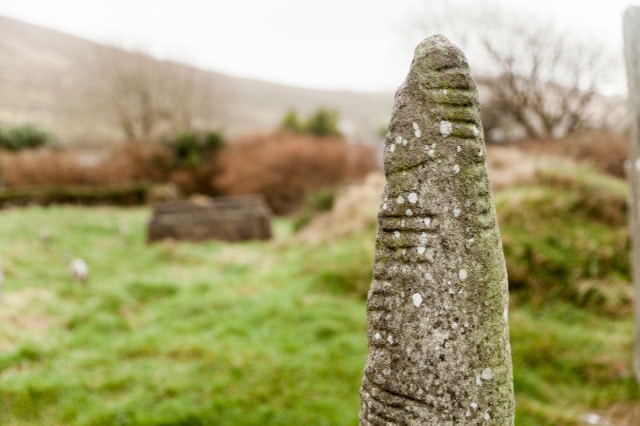
No surviving major manuscripts or references give a detailed account of the Druids in Ireland as their knowledge was never written down in a cohesive historical fashion. They left behind traces of their arcane form of knowledge on stone megaliths, circles, and standing stones.
The Druids never completely disappeared from Ireland but instead, evolved with the times, always holding onto their connection to nature.
Biles, or sacred trees, are still mentioned throughout Irish history in the 11th century by bards, historians, scholars, natural philosophers, early scientists, and medical doctors. These people were the modernized Druids – educated and wise beings.
Neo Druidism (Modern Day Druidism)
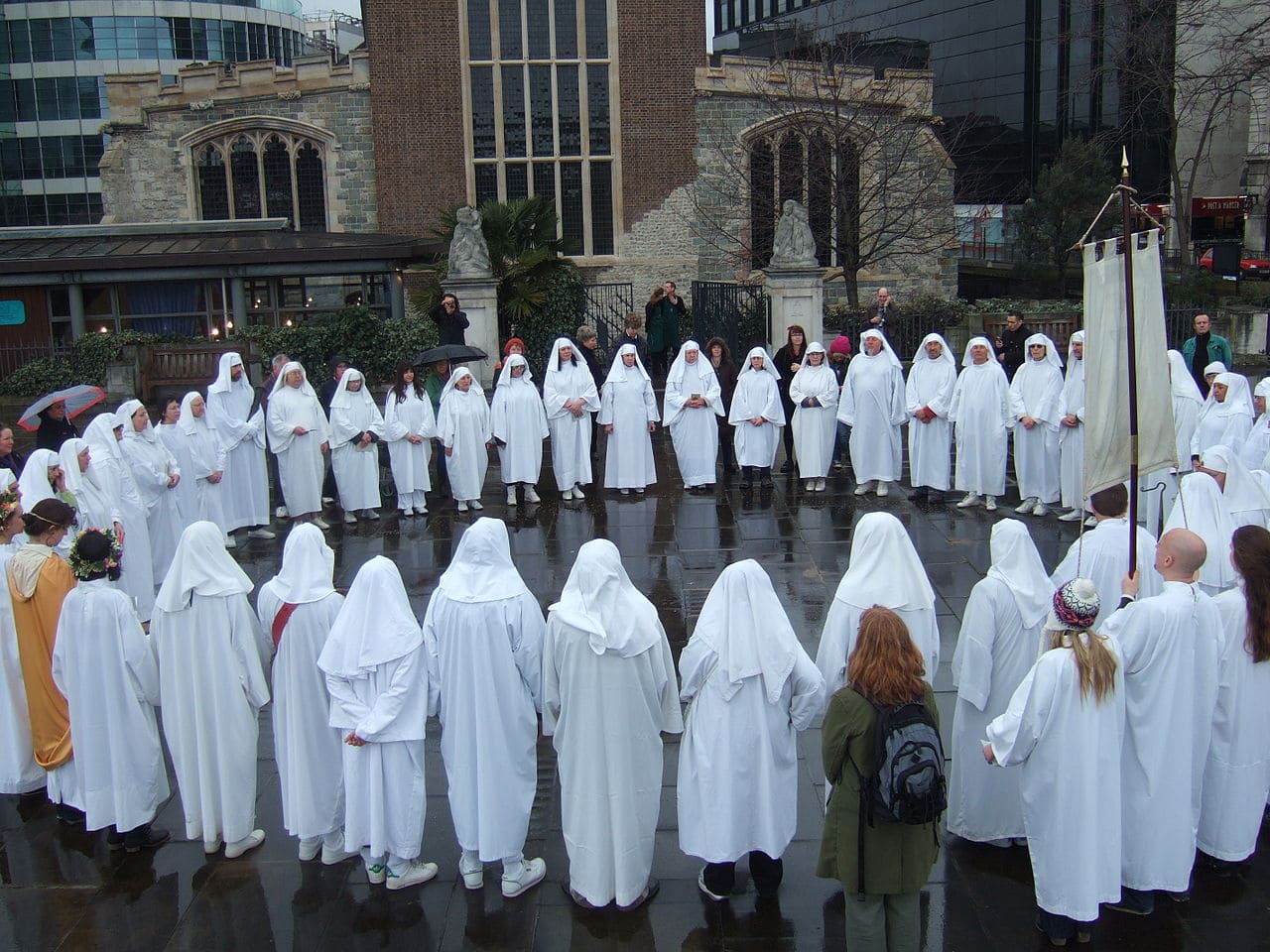
Druidism experienced a revival in the 18th century. It originated as a cultural or spiritual movement based on the romanticization of the ancient Druids. The early Druid belief in the veneration of nature became a core belief of modern Druidism.
The majority of these modern Druids still identified as Christians and have made up groups similar to fraternal orders. One was named “The Ancient Order of The Druids” and was founded in Britain in 1781.
In the 20th century, a few modern Druidic groups tried to recreate what they thought was an authentic form of Druidism and attempted to create a more historically accurate practice. In the end, however, it was more based on Gaulish Druidism, including the use of white robes and walks around megalithic circles that were never intended to be used as temples.
Conclusion
At one point in time, the Druids were among the most powerful groups in the Celtic system, but with the advent of Christianity, their power and reach slowly waned.
The Druids of Ireland – the wise, self-educated beings who once were considered the spiritual backbone of society – never entirely disappeared. Instead, they evolved with the times into a society that chose a foreign religion over a native belief system.








